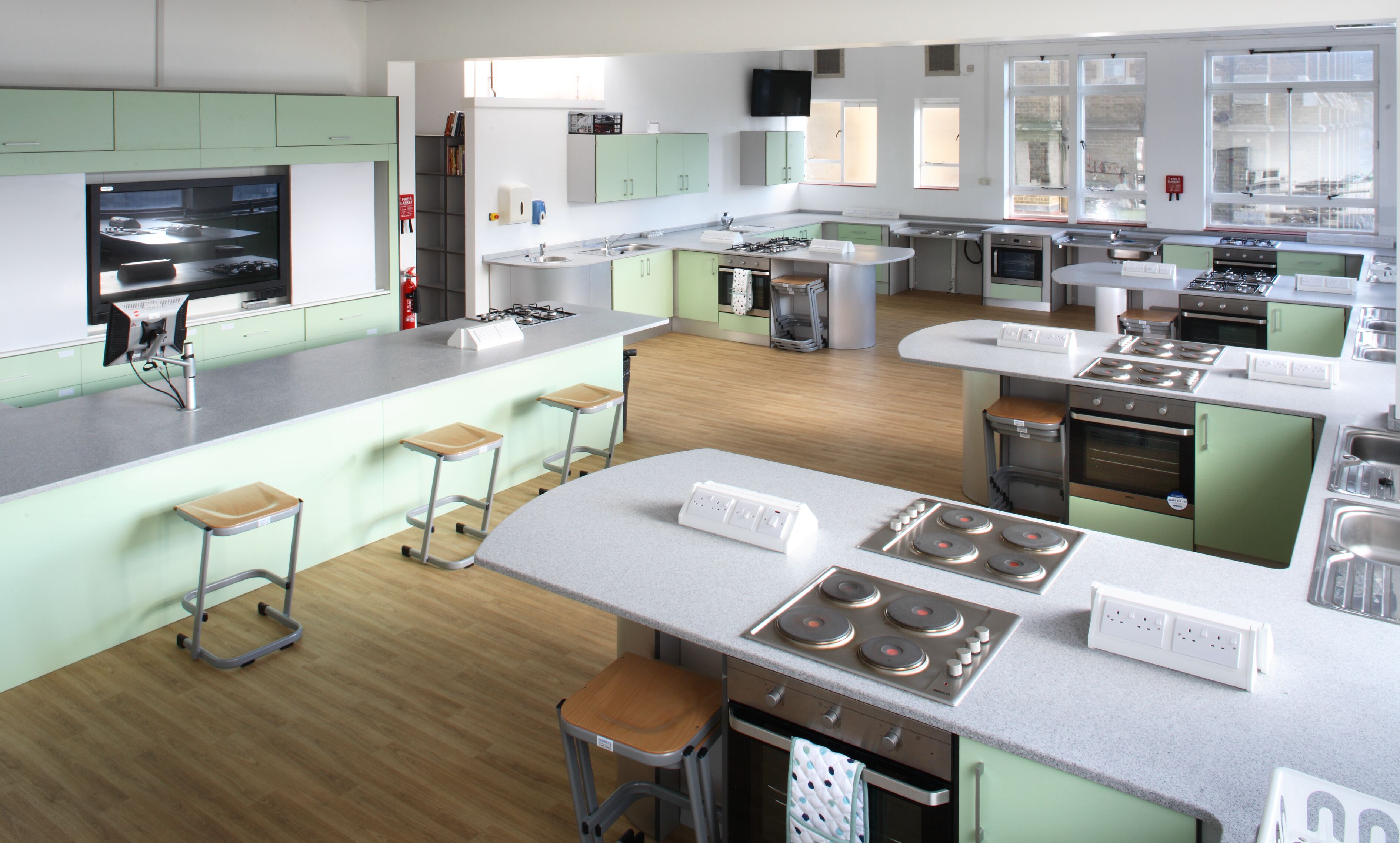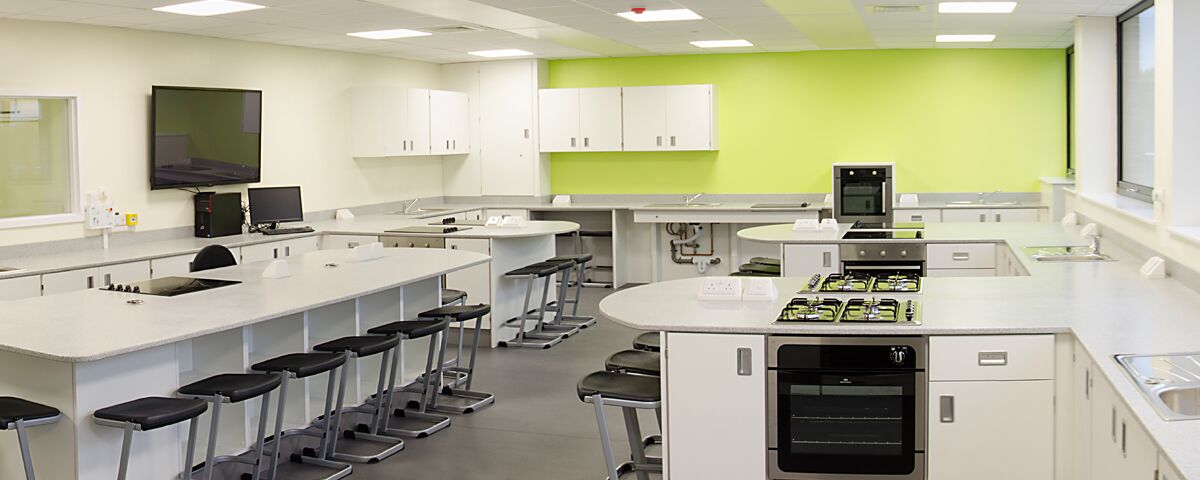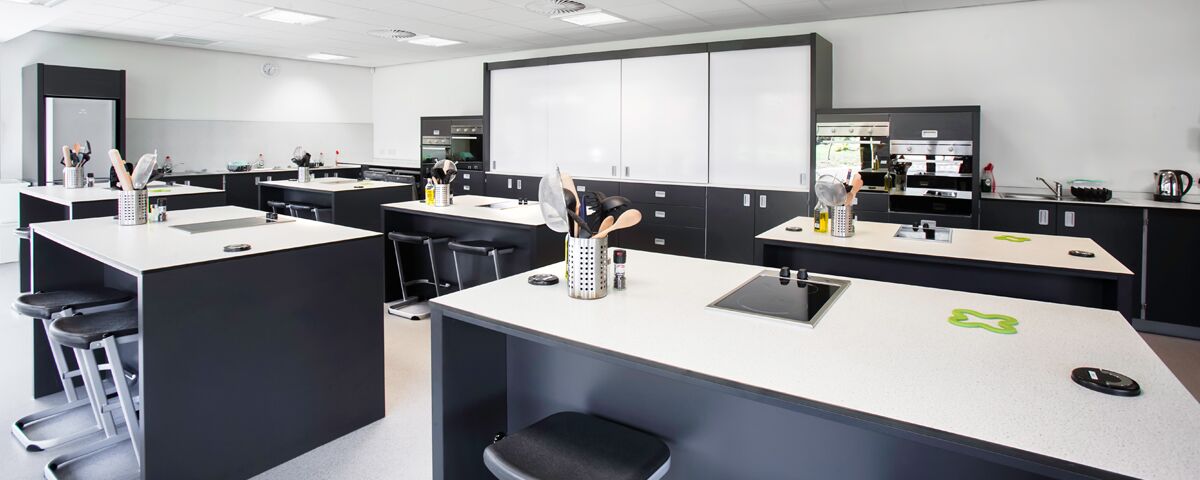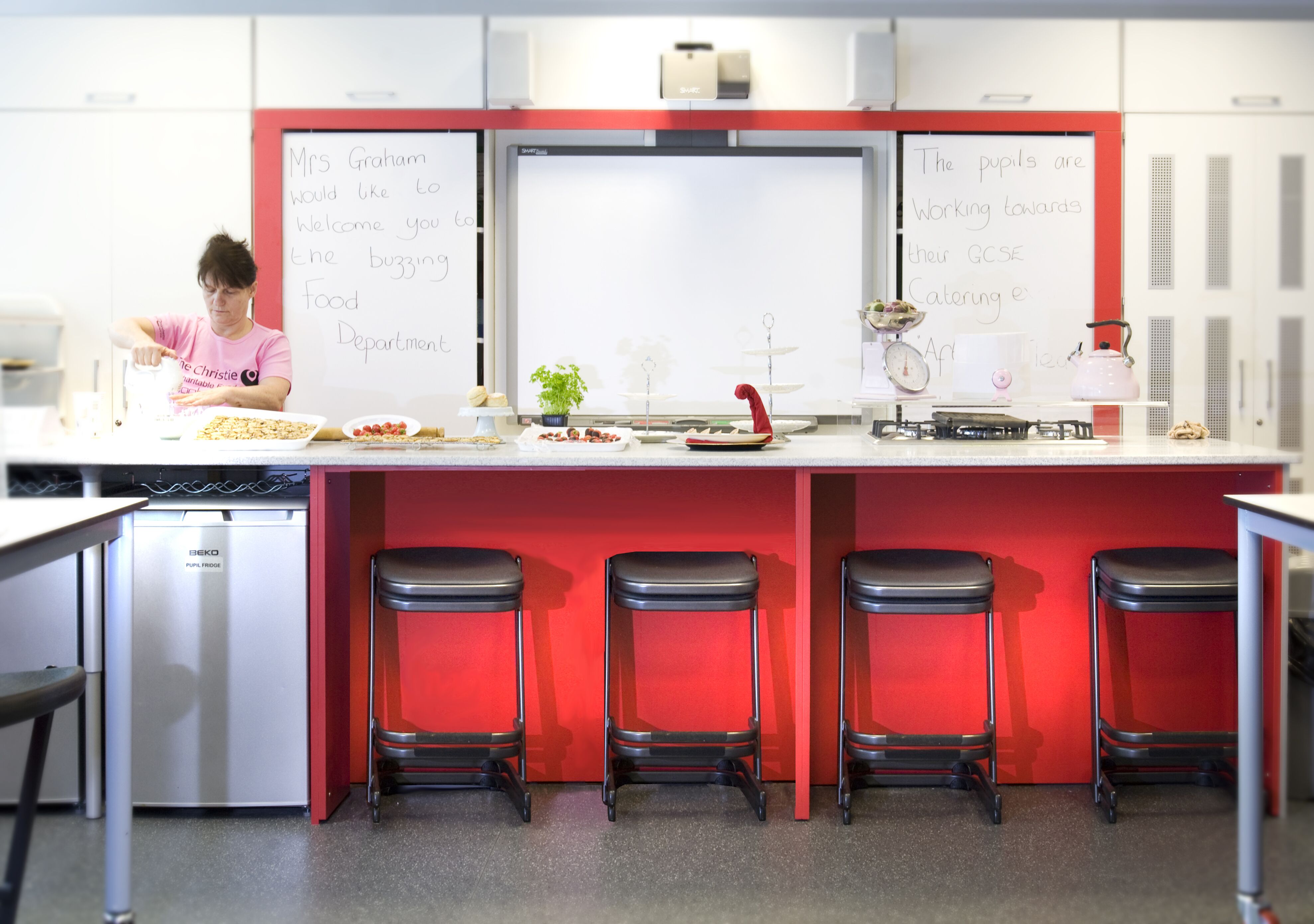It’s Healthy Eating Week! We explore what makes a fantastic Food Technology classroom
In honour of Healthy Eating Week 2015, we explore what makes a fantastic food technology classroom – from the technology and facilities to the desk design and layout. Food technology is becoming ever more popular, so it’s important for schools to implement effective design to accommodate the needs of food technology students.
Design & Layout
Given the practical nature of the subject, the layout of food technology classrooms must be carefully considered. Similar to science laboratories, food technology classrooms should accommodate theory-based learning whilst providing ample space for practical work. Thus, flexibility is key to the implementation of a successful food technology classroom layout.
The majority of food technology classrooms can be placed into three distinct design categories: Peninsular, Island or Perimeter. These room layouts are the most common and are used in schools across the country. Here, we’ll discuss the pros and cons of each classroom layout to distinguish which caters for the needs of students and teachers the best:
Peninsular
The peninsular arrangement is the most common layout, and normally features a series of bays with two work units facing one another across the peninsular.
The layout offers generous worktop space, a functional student to equipment ratio, and excellent sight lines – so it’s ideal for larger classrooms. However, each bay can take up a lot of space, making it difficult to create a general teaching area for theory-based learning in smaller spaces.
Island
An island arrangement features a series of fixed islands spaced at regular intervals around the room, with gas and electricity services connecting through the floor. Used prevalently in higher education, the island layout offers flexible space for practical work, as well as excellent access and room circulation for teachers and pupils.
Unfortunately, the fixed arrangement of the benches makes it difficult to factor in areas for theory based learning in smaller classrooms. The island arrangement can be particularly space hungry, requiring a large amount of floor area to make it work effectively. Thus, the arrangement favours large classrooms where circulation and access are not affected.
Perimeter

The perimeter arrangement is used widely in high schools, and normally features work stations spaced around the walls with a large, conventional classroom area in the centre of the room.
Due to the location of individual workstations, circulation can be optimal, with no back-to-back access issues. Sightlines are also good, with a large space devoted to theory-based learning. However, the restrictions of a singular workbench can impact practical sessions, with some students unable to access cookers and other appliances when they require them.
In many food technology labs, a combination of the perimeter and island layout works best to maximise workspace and aid circulation throughout the classroom. This arrangement can be effective for smaller food technology labs, as it exploits available floor space and ensures each student has ample space to work.
Technology & Facilities
From hobs and cookers to fridges, freezers and sinks – food technology classrooms require a lot of technology to ensure they provide an effective learning environment. Here is a comprehensive list of the equipment and appliances required in a food technology classroom:
Ovens
Ideally, food technology rooms should have a combination of cooker types – including gas and electricity– to ensure students learn how to cook using more than one device. The ideal is to aim for two pupils per oven or hob.
Fridges
Fridges should be big enough to store work, as well as any ingredients students bring in that day. Fridges shouldn’t be used for permanent storage, however, and must be emptied and cleaned regularly.
Freezers
Given that most students will be cooking fresh food before taking it home, freezers aren’t essential in food technology classrooms. They are however, useful to have – particularly in higher education when students are working on advanced projects.

Sinks
As with cookers, sinks should be shared by a maximum of 2-3 students to ensure general tasks can be carried when required.
Dishwashers
Dishwashers are essential in food technology labs; helping to speed up the cleaning process and ensure no lesson time is wasted washing dishes. Modern dishwashers are reasonably inexpensive, and even the most affordable models offer reliable, day-to-day usability.
Equipment Store
Ample space for storing handheld appliances, utensils and crockery is essential in food technology classrooms. Under worktop cupboards are ideal for storing, pots, pans and other everyday utensils, whilst a separate pantry may be required for storing particular appliances or ingredients.
Health & Safety Considerations
Given the quantity of practical study undertaken in food technology lessons, rooms are subject to a rigorous health and safety code, and must be DDA (Disability Discrimination Act) compliant. Gas safety and appropriate drainage are of vital importance, and services should be checked regularly to ensure they adhere to current health and safety regulations. Dangerous appliances such as ovens and hobs should be fitted with emergency stop buttons and isolation switches to prevent serious injury.
When assessing whether a food technology room meets DDA requirements, consider the following:
- Is there sufficient worktop space for each student? Including access to a worktop, cooker and sink.
- Are some units height adjustable? To accommodate wheelchair users, as well as others with limited mobility.
- Are there specially adapted fittings? Including sensory switches for students with visual impairments.
- Are there clear sight lines and suitable access? Classrooms should be spaced to allow easy circulation, making it easier for teachers to access students in an emergency situation.
Materials
Practical work areas in food technology rooms are susceptible to heat, water and impact damage – as well as everyday wear and tear – so it’s vital work surfaces are durable. Some materials incur additional fitting costs, whilst others are less flexible depending on the classroom design. Here, we’ll discuss three of the best materials to use in food tech classrooms:
Solid Surface / Velstone
Arguably the best surface to use in food technology classrooms are solid surfaces– non-porous materials that are both durable and visually appealing. Velstone is one of the most hygienic surface material which can be joined seamlessly, offering complete flexibility whatever the shape and size requirements. The material is also extremely low maintenance and can be sanded and re-polished should any damage occur.
Trespa
A durable hard wearing material which is moisture and mould resistant makes Trespa Toplab Base ideal for use in food technology classrooms. It is non-porous and withstands dirt accumulation, therefore easy to maintain and provides complete protection against impact.
Stainless Steel
In higher education, stainless steel surfaces will provide a professional finish to the food technology lab. Used widely in commercial kitchens, stainless steel is highly durable, easy to maintain and extremely hygienic. It can however, be easily dented and scratched, so it may not be suitable for some age groups. Install stainless steel in smaller areas and zones around the food technology classroom to provide extra protection against liquid damage.




